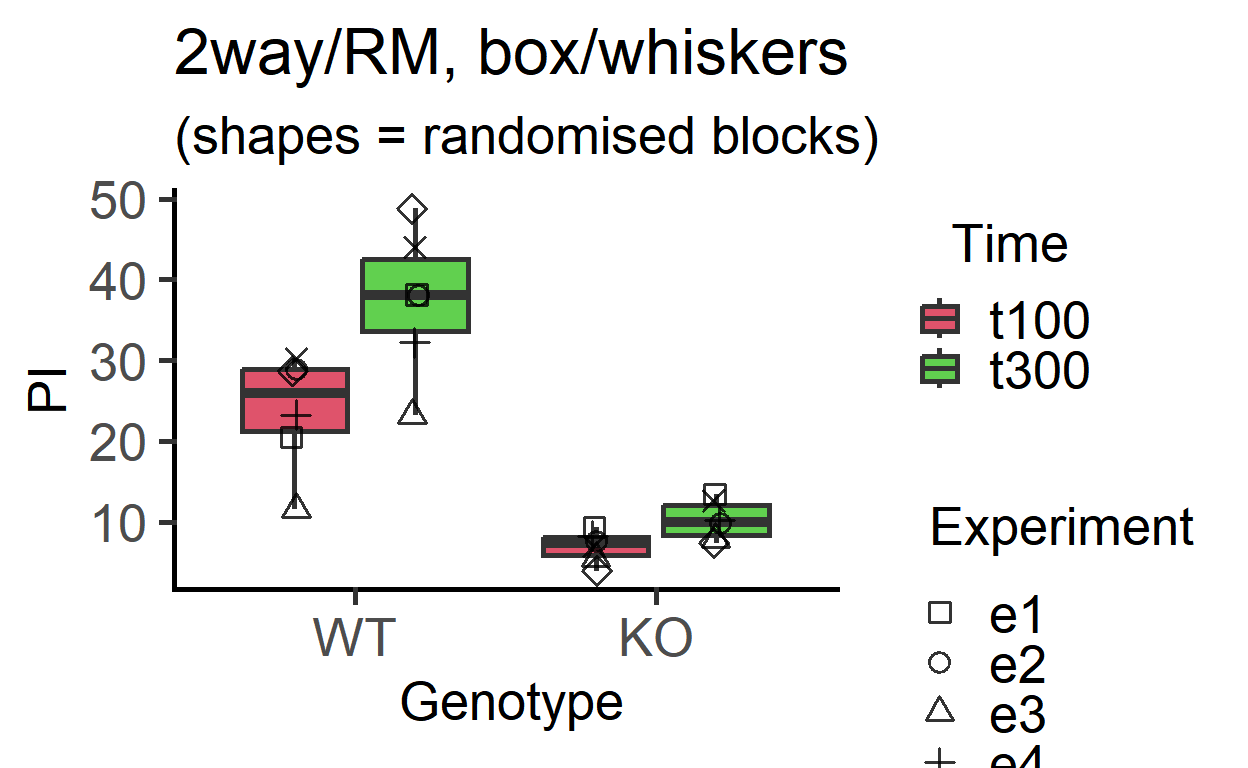Data format
See the data help page and ensure data table is in the long-format.
Saving graphs
See Saving graphs for tips on how to save plots for making figures.
Experimental designs
The d in the name stands for dimensions or variables in the data. plot_3d... functions are for 1-way ANOVA and plot_4d_... for 2-way ANOVA with randomised blocks; plot_4d_... require a second categorical factor that is mapped to bars or boxes through the bars or boxes argument, respectively.
These functions are generally useful when a third variable needs to be plotted to shapes of symbols. This is handy for plotting experiments with randomised blocks or repeated measures, where the shape of the symbol (shapes argument) is mapped to a “blocking factor” variable in the data table.
plot_3d_point_sd, plot_3d_scatterbar or plot_3d_scatterbox
These functions plot bars or box and whisker plots, with the fill aesthetic mapped to the categorical X variable, and shapes to the blocking factor.
Error bars in the point and bar graphs represent standard deviation (SD) by default. they can be changed to SEM or CI95 using the ErrorType argument.
plot_3d_point_sd(data_1w_death,
Genotype, #categorical X variable
Death, #numeric Y variable
Experiment, #blocking factor
ColPal = "fishy", #"contrast" palette
ColRev = T)+ #reverse colour order
labs(title = "1way RB, mean/SD",
subtitle = "(reverse `fishy` palette)")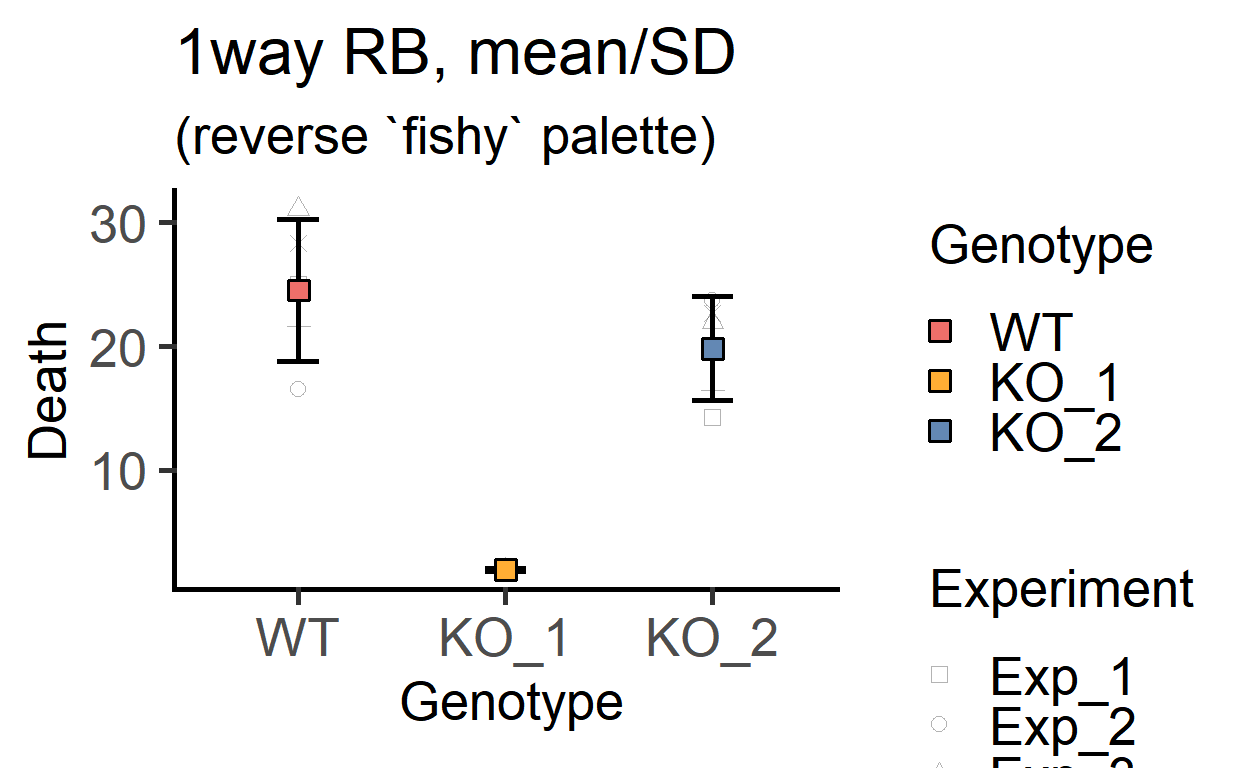
plot_3d_point_sd(data_1w_death,
Genotype, #categorical X variable
Death, #numeric Y variable
Experiment, #blocking factor
ErrorType = "SEM", #SEM error bars
ColPal = "kelly", #"contrast" palette
ColRev = T)+ #reverse colour order
labs(title = "1way RB, mean/SEM",
subtitle = "(reverse `kelly` palette)")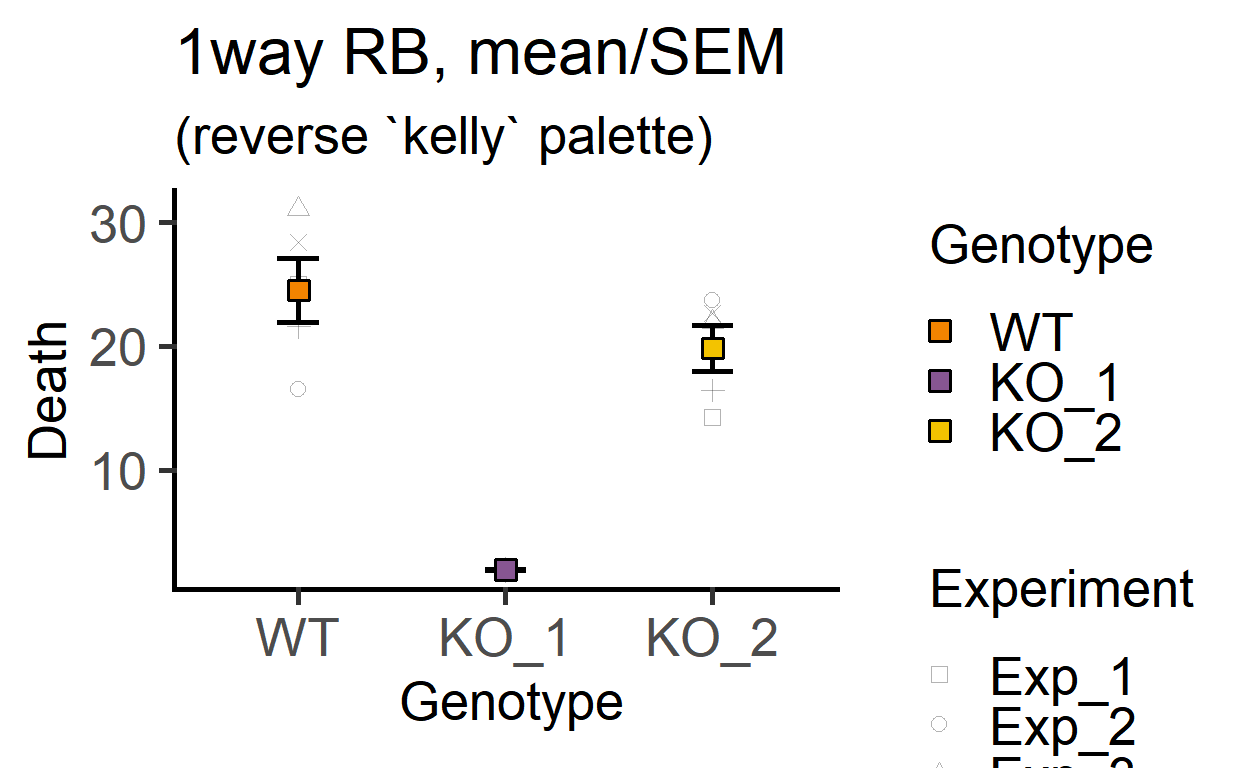
The box represents IQR with a thick line representing the median, and whiskers depict 1.5*IQR.
There are several additional arguments, including ewid, symsize, symthick, fontsize, jitter, s_alpha and b_alpha, which are similar to plot_scatterbar_sd or plot_scatterbox version for plotting two variables.
plot_3d_scatterbar(data_1w_death,
Genotype, #categorical X variable
Death, #numeric Y variable
Experiment, #blocking factor
ColPal = "fishy", #"contrast" palette
ColRev = T)+ #reverse colour order
labs(title = "1way RB, bar/SD",
subtitle = "(reverse `fishy` palette)")
plot_3d_scatterbox(data_1w_death,
Genotype, #categorical X variable
Death, #numeric Y variable
Experiment, #blocking factor
ColPal = "kelly", #"contrast" palette
ColRev = T)+ #reverse colour order
labs(title = "1way RB, box/whiskers",
subtitle = "(reverse `kelly` palette)")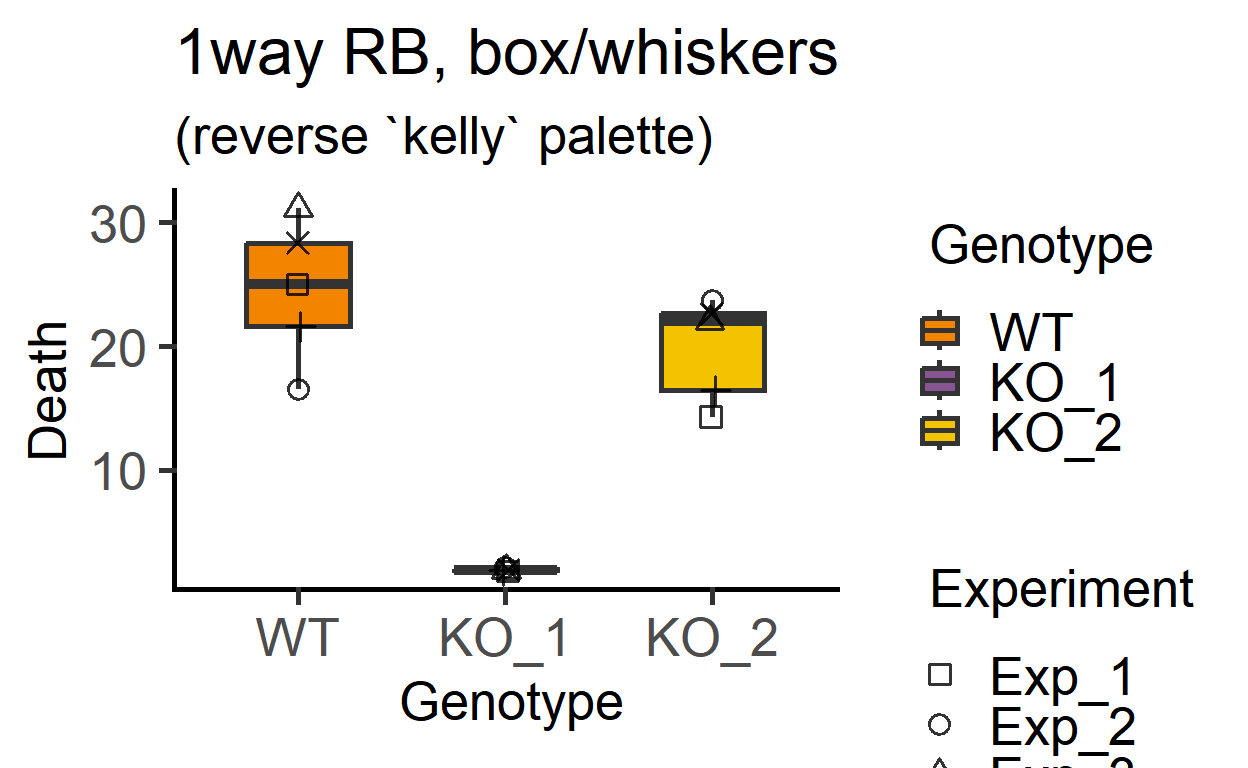
plot_3d_ in single colour
plot_3d_scatterbox(data_1w_death, #data table
Genotype, #X variable
Death, #Y variable
Experiment, #shape variable
SingleColour = "pale_red")+ #colour
labs(title = "1w RB ANOVA, single colour")
plot_3d_scatterbox(data_1w_death, #data table
Genotype, #X variable
Death, #Y variable
Experiment, #shape variable
SingleColour = graf_palettes$bright[1])+ #colour
labs(title = "1w RB ANOVA, single colour")
plot_4d_point_sd, plot_4d_scatterbar & plot_4d_scatterbox
These functions additionally need a points, bars or boxes argument for the second categorical variable in the 2-way ANOVA.
Since v4.0, the shapes argument can be left empty to plot a simple/ordinary ANOVA, or assigned a variable for the blocking factor/repeated measures. Also the ANOVA plots vignette.
In plot_4d_point_sd, default error bars denote SD, which can be changed to SEM or CI95 using the ErrorType argument.
plot_4d_point_sd(data_2w_Tdeath, #data table
Genotype, #categorical X variable
PI, #numeric Y variable
Time, #2nd categorical factor
Experiment, #shapes
bwid = .7)+ #bar width
labs(title = "2way/RM, mean/SD",
subtitle = "(shapes = randomised blocks)")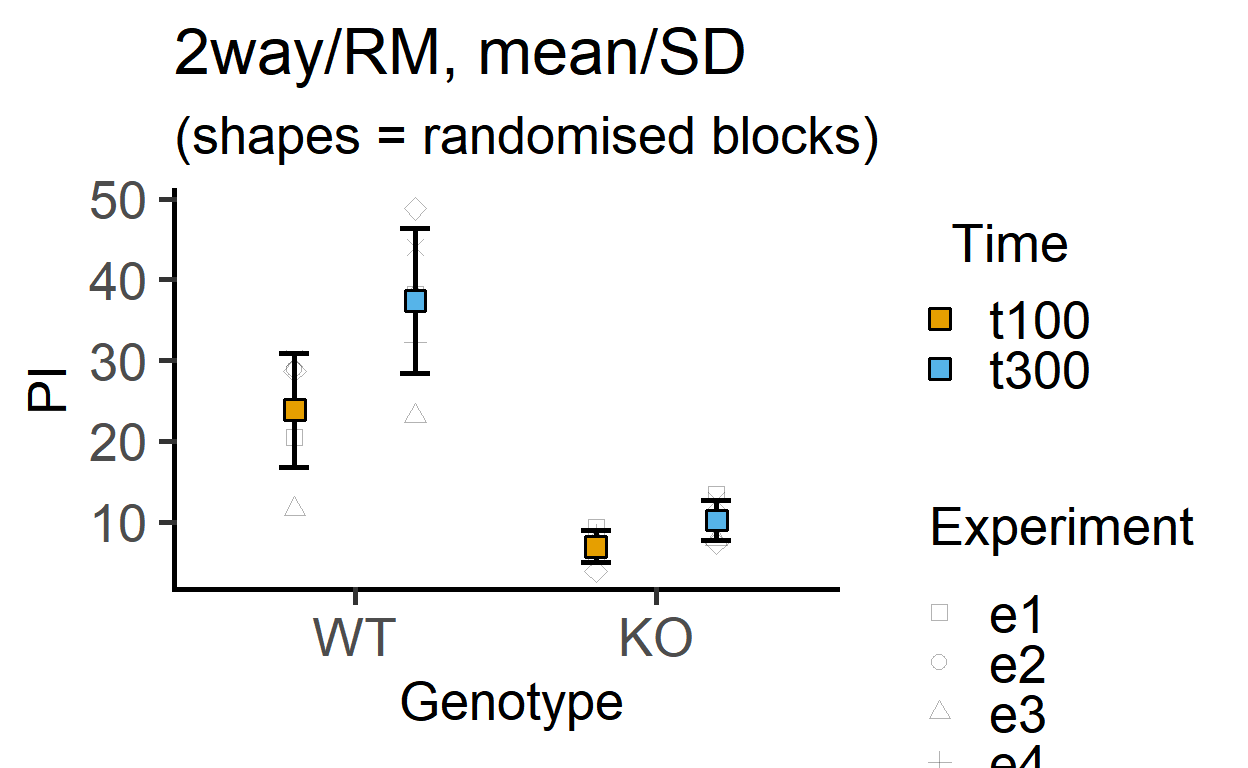
plot_4d_point_sd(data_2w_Tdeath, #data table
Genotype, #categorical X variable
PI, #numeric Y variable
Time, #2nd categorical factor
ColPal = "r4")+ #colour palette
labs(title = "2way simple ANOVA",
subtitle = "(no `shapes` arugment)")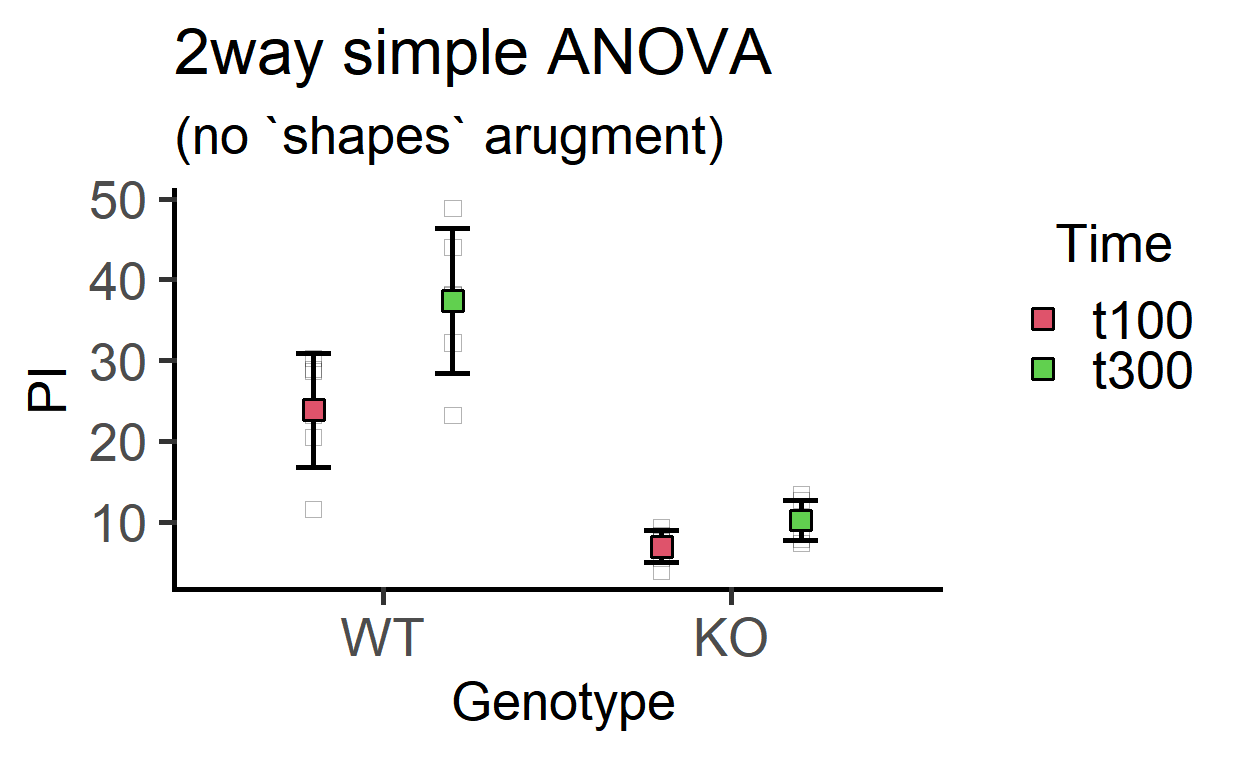
Here are 2way ANOVAs with bars or box and whiskers.
plot_4d_scatterbar(data_2w_Tdeath, #data table
Genotype, #categorical X variable
PI, #numeric Y variable
Time, #2nd categorical factor
Experiment, #shapes
bwid = .7)+ #bar width
labs(title = "2way/RM, bars/SD",
subtitle = "(shapes = randomised blocks)")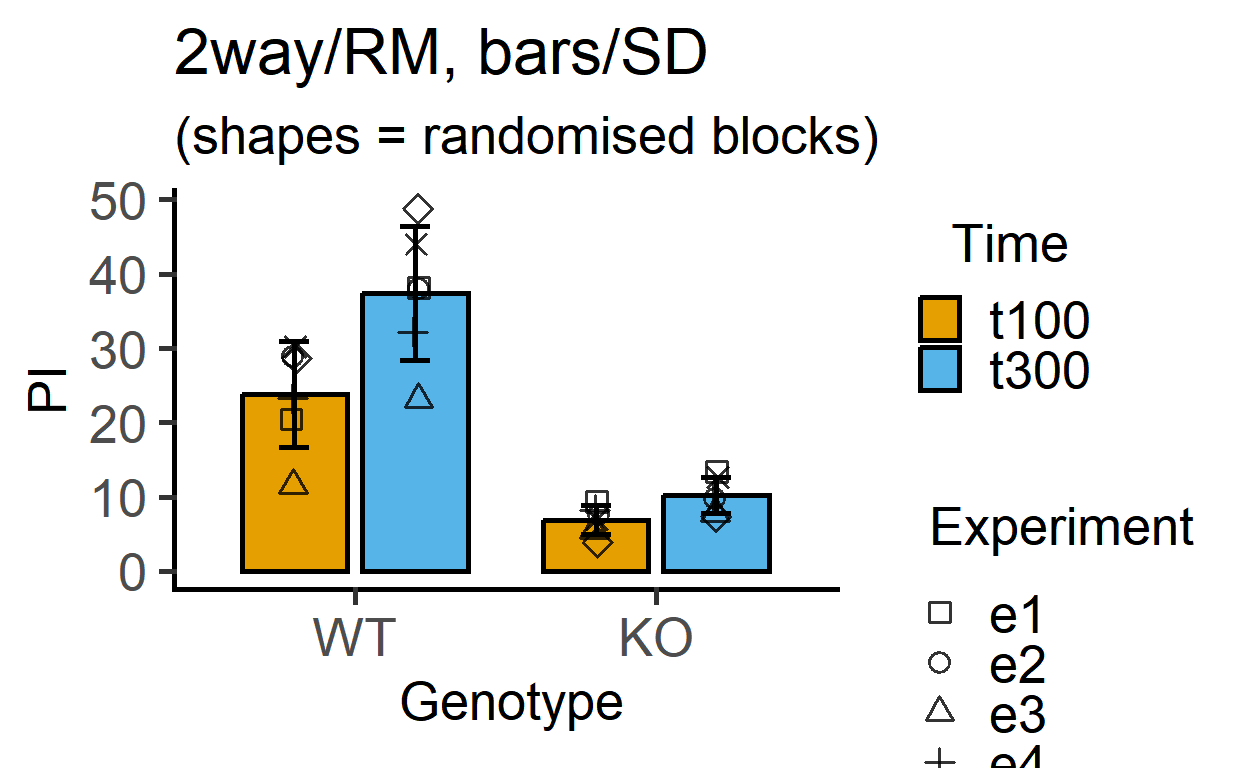
plot_4d_scatterbox(data_2w_Tdeath, #data table
Genotype, #categorical X variable
PI, #numeric Y variable
Time, #2nd categorical factor
Experiment,
ColPal = "r4")+ #colour palette
labs(title = "2way/RM, box/whiskers",
subtitle = "(shapes = randomised blocks)")